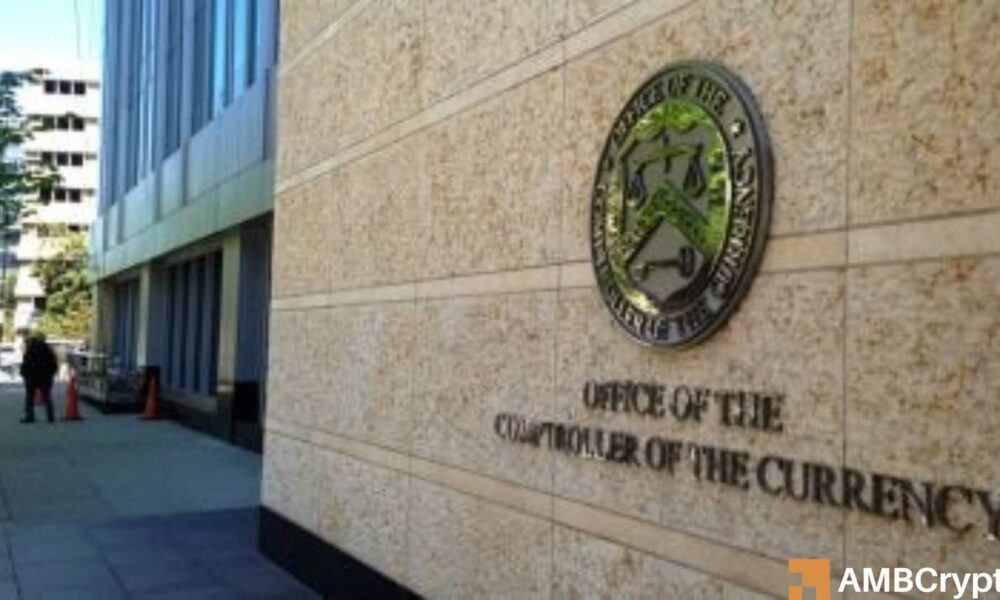OCC’s Clarification on U.S. Banks and Crypto Assets: An Overview
In a significant development, the U.S. Office of the Comptroller of the Currency (OCC) has declared that U.S. banks are permitted to trade, hold, and enable third parties to manage clients’ cryptocurrency assets. This move comes in light of the evolving landscape of digital assets and is part of broader efforts to integrate these technologies into the traditional banking sector. This article dives deep into the recent clarifications by the OCC, exploring their implications and the responses from various stakeholders.
The OCC’s Interpretive Letter
On May 7, the OCC issued an interpretive letter outlining that national banks are allowed to custody cryptocurrencies, including Bitcoin (BTC), on behalf of their clients. Importantly, banks can collaborate with third parties to offer these services, provided they have explicit consent from their clients. This interpretation not only solidifies the legal foundation for banks to engage with crypto assets but also acknowledges the growing demand for such services among consumers. As financial institutions adapt to these new paradigms, the OCC’s guidance is seen as a crucial step toward legitimizing cryptocurrency within mainstream finance.
Expanding Custody Services
Rodney Hood, CEO of the OCC, further emphasized that banks could expand their services to encompass various custody-related functions, including record-keeping and tax services. The letter indicates that banks could utilize sub-custodians to assist in delivering these services. This expanded scope not only enhances the value proposition for banks but also positions them as comprehensive service providers within the digital asset ecosystem. This is particularly significant for clients looking for trusted institutions to handle their crypto holdings securely and efficiently.
A Shift in Regulatory Attitude
This recent move by the OCC follows a previous guidance issued in March, which approved new frameworks allowing banks to manage crypto assets. Notably, it rescinded an earlier, more restrictive approach that had been in place since 2021. This shift towards a more accommodating regulatory environment for cryptocurrencies reflects a growing acceptance of digital assets within the financial system. The changes are aligned with broader policies that emerged during the Trump Administration, highlighting a continuity of pro-crypto initiatives aimed at fostering innovation and growth in the sector.
Support from Legislative Bodies
The OCC’s clarification has been well-received, particularly by the U.S. House Committee on Financial Services, which is predominantly led by Republican members. The committee has expressed support for the evolving framework surrounding digital assets, indicating a commitment to developing a regulatory structure that encourages innovation while ensuring consumer protection. Their endorsement of the OCC’s decisions signifies a collaborative effort to bolster the U.S. crypto market, aligning regulation with the growing interest and investment in digital currencies.
Compliance and Safety Regulations
While the OCC’s guidance is a positive step toward integrating cryptocurrencies within traditional banking, Hood has stressed the importance of adhering to existing laws and regulations. He made it clear that all permissible crypto activities must be conducted in a safe and sound manner, emphasizing the necessity for regulatory compliance. This insistence on safety and legality aims to build public trust in the banking sector’s involvement with cryptocurrency, ensuring that the assimilation of digital assets does not compromise the integrity of traditional finance.
The Implications for Stablecoins
With the OCC’s recent clarifications, stablecoins are expected to be significant beneficiaries of this regulatory shift. By solidifying the status of these digital assets within the banking framework, the OCC is paving the way for a potentially disruptive evolution in the financial landscape. As banks begin to offer custodial and transactional services for stablecoins, this could enhance their utility and foster further innovation in payment systems. The implications of this move are vast, hinting at a future where traditional banking and digital asset management coexist harmoniously, fundamentally transforming how financial transactions are conducted.
In summary, the OCC’s recent clarifications signify a pivotal moment in the relationship between U.S. banks and cryptocurrencies. As regulatory bodies evolve their stance on digital assets, the financial landscape is set for dynamic changes that will benefit both consumers and institutions. The gravitation towards a more inclusive approach to cryptocurrencies is likely to spark innovation and investment, cementing the role of digital assets within mainstream finance.


